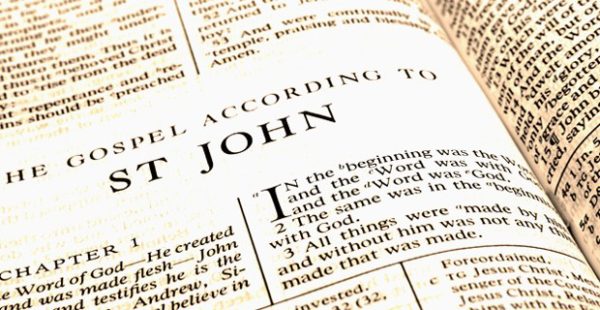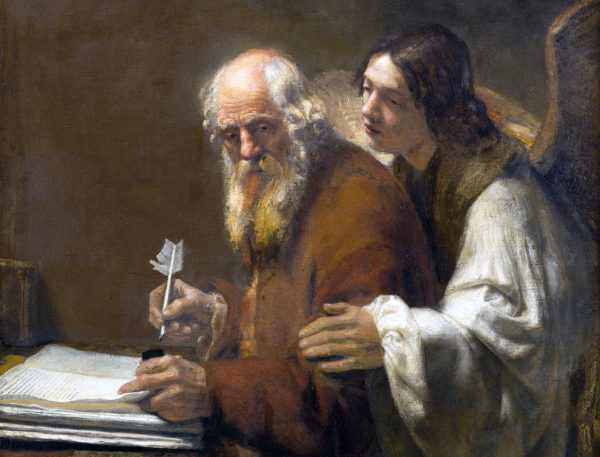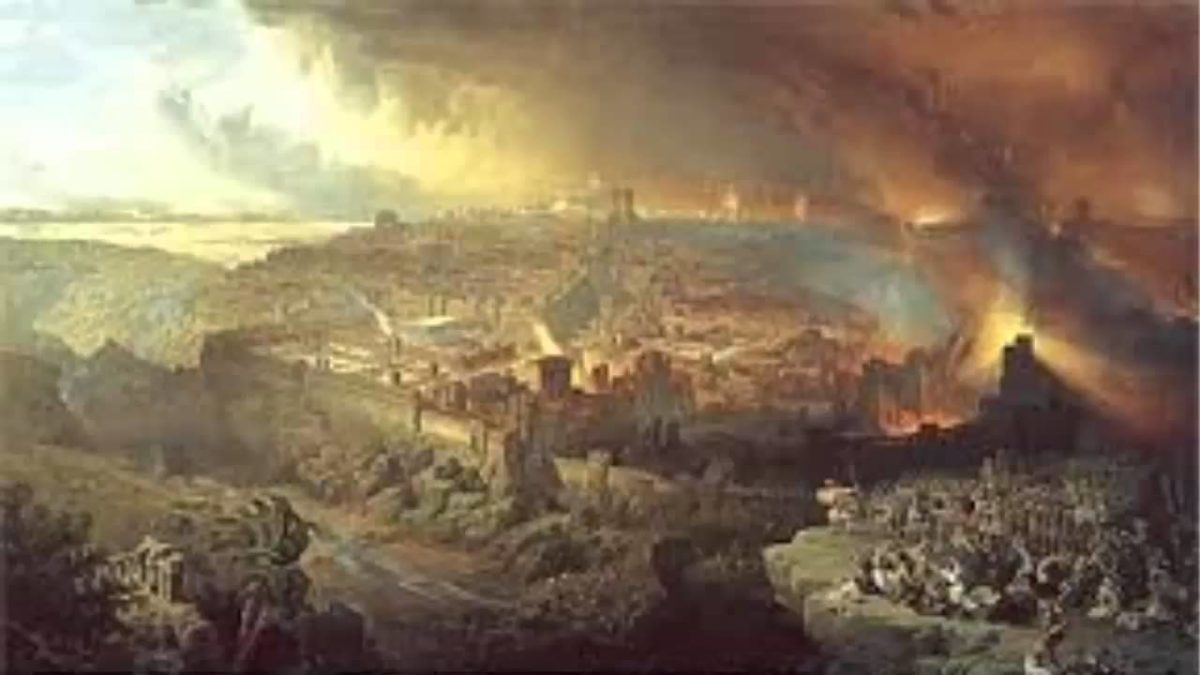One of the events recorded in all four Gospels is Jesus’ cleansing of the Temple. On this occasion, Mark tells us, Jesus “entered the Temple and began to drive out those who sold and those who bought in the Temple, and he overturned the tables of the money-changers and the seats of those who sold pigeons; and he would not allow anyone to carry anything through the Temple” (Mark 11:15-16).
A question that occurs to almost everyone who reads this passage is: Why did Jesus do this?
However, a second question occurs to those who study the Gospels closely: When did Jesus do this? Matthew, Mark, and Luke present it as occurring at the end of Jesus’ ministry, but John presents it as occurring at the beginning of the ministry.
Here we’ll look at both questions.
On why Jesus did it, the Gospels provide clues. The fullest version is found in Mark, who records Jesus saying, “Is it not written, ‘My house shall be called a house of prayer for all the nations’? But you have made it a den of robbers” (Mark 11:17).
Here Jesus combines two quotations from the Old Testament. The first is from Isaiah 56:7, where the prophet describes a day when God will bring Gentiles to Jerusalem, where they will worship him, and he will accept their offerings. Thus the Temple is called “a house of prayer for all the nations.”
The Temple was structured as a series of four progressively more holy courtyards. From the outermost to the innermost, they were
-
- the court of the Gentiles, where Gentiles could (and did!) come to worship God;
- the court of women, where Jewish women could worship;
- the court of Israel, where Jewish men could worship; and
- the court of priests, where Jewish priests ministered.
Jesus’ cleansing of the Temple on the grounds that it was to be a house of prayer for all the nations may indicate that the money-changers and the sellers of sacrificial animals had set up shop in the court of the Gentiles and were misappropriating worship space for ordinary commerce.
That leads us to the second quotation, which is from Jeremiah 7:11, where the prophet excoriates the people of his day for performing immoral and pagan practices and—in God’s eyes—turning his Temple into “a den of robbers” (that is, a place where robbers feel safe in their immoral lifestyle).
The fact the money-changers and sellers felt safe in the Temple—and the fact they were engaged in commerce—make the reference to the den of robbers appropriate.
The other Gospels do not pick up on the detail about the Gentiles that Mark includes. Matthew and Luke omit “for all the nations” from the Isaiah quotation, and John has Jesus telling the sellers of pigeons, “Take these things away; you shall not make my Father’s house a house of trade” (John 2:16).
These accounts focus more on the use of the Temple to earn a living rather than for worship as what is objectionable, though this is consistent with Mark’s account.
On the question of when Jesus did it, there have been several proposals:
-
- Jesus chronologically did it at the end of his ministry (per the Synoptic Gospels), and John presents it at the beginning for theological reasons.
- Jesus chronologically did it at the beginning of his ministry (per John), and the Synoptics present it at the end for theological reasons.
- Jesus did it twice—at both the beginning and the end of his ministry.
None of these options should be dismissed out of hand. It is demonstrable that the Evangelists do not always record events in chronological order. Instead, they sometimes put material in topical order—as when Matthew gathers together teachings of Jesus into major discourses (e.g., the Sermon on the Mount is a collection of Jesus’ ethical teachings that are scattered in different places in Luke).
There’s more to say about these three possibilities than we can explore here, but I’ll offer a few thoughts.
You might argue for proposal 1 by noting that the Synoptic Gospels link the cleansing of the Temple to Jesus’ death. Immediately after his remark concerning the den of robbers, Mark continues: “And the chief priests and the scribes heard it and sought a way to destroy him” (Mark 11:18).
Matthew and Luke put a little more space between the clearing of the Temple and the plot to kill Jesus, but all three have the cleansing as an initiating event in the conflict between Jesus and the Jerusalem authorities. Mark links them explicitly, and it’s understandable why—after a public outburst in the Temple—the authorities would act against Jesus. One might thus regard this as the chronological placement of the event.
However, you might argue for proposal 2 by pointing out that John is demonstrably concerned with chronology, so one could view his account as an attempt to clarify exactly when the incident happened.
Like the Synoptics, John notes that the incident happened when “the Passover of the Jews was at hand” (John 2:13). The question would be which Passover, and here John provides a clue. Jesus says, “Destroy this temple, and in three days I will raise it up,” after which “the Jews then said, ‘It has taken forty-six years to build this temple [Greek, naos], and will you raise it up in three days?’” (vv. 19-20).
Unfortunately, this common translation appears to be mistaken. John distinguishes between the Temple in general, including its courtyards—for which he uses the term hieron—and the inner part of the Temple that only the priests could enter—for which he uses the term naos. Here John uses naos, and the naos was completed in 18/17 B.C.
This reveals that the verse should be translated according to another grammatically possible reading, which would be “This temple [naos] has been built for forty-six years.”
The forty-sixth anniversary of the naos’s completion would be A.D. 30, so John is locating the clearing of the Temple at Passover in A.D. 30.
While some think Jesus was crucified in A.D. 30, this is mistaken. The evidence indicates he was born in 3/2 B.C., and Luke states that he “was about thirty years of age” when he began his ministry (Luke 3:23). That means Jesus began his ministry about A.D. 29, so John situates the clearing of the Temple toward the beginning of Jesus’ ministry—in A.D. 30—with Jesus not being crucified until A.D. 33.
We thus have an indication from the Synoptics that the clearing led directly to the death of Jesus and an indication from John that it happened at the beginning of the ministry.
This leads us to proposal 3—that Jesus cleared the Temple twice, once at the beginning and once at the end of his ministry, like bookends.
This proposal is rejected by many scholars, but it is the most straightforward reading of the evidence.
One author who defends the two-clearings hypothesis is Joel McDurmon, and he proposes a reason why Jesus would clear it twice.
Simply to bookend his ministry with the two actions would be reason enough to do this, but McDurmon proposes that Jesus was modeling his actions after an Old Testament ritual whereby a priest was required to inspect a house that had become infested with “leprosy” (Lev. 14:33-53).
Houses can’t get the disease we call leprosy, so this was most likely a form of mold or mildew. The priest was required to inspect the house more than once:
-
- If he found “leprosy” in the house, he would order it closed for seven days.
- If, when he came back, it appeared that the disease had spread, the priest would have the affected plaster and stones yanked out and replaced.
- If the disease broke out again later, the priest would order the house destroyed.
McDurmon links the first and second clearings of the Temple to the second and third of these inspections. He concludes that after the initial clearing, Jesus rejected the Temple officials and replaced them with his disciples as “living stones,” and after the second clearing, he announced the destruction of the Temple.
This is interesting, but it is very speculative. The text does not mention or clearly imply a connection to Leviticus 14. Further, the priest is required to visit the house three times before ordering its destruction: (1) an initial inspection, (2) a second inspection seven days later, and (3) a third inspection at a later time if the disease breaks out again.
For the parallel to fit, Jesus would have needed to visit the Temple seven days before the first cleansing and see its corruption, but there is nothing like that in John or the Synoptics.
McDurmon tries to argue that the first visit is accomplished seven days before John’s cleansing by Jesus’ baptism and his constitution as the new Temple, but there are multiple problems with this: (i) Jesus was always the new temple; he didn’t become it upon baptism, (ii) he didn’t see corruption in himself when he was baptized, (iii) he didn’t visit the Jerusalem temple and see its corruption between his baptism and the first cleansing, and (iv) there are more than seven days between Jesus’ baptism and the first cleansing.
McDurmon tries to argue that this period is only seven days, but John does not say or imply this. In John, the length of time between the two is indeterminate. Further, we’ve already seen that Jesus’ ministry began in A.D. 29, but the first cleansing didn’t happen until Passover of 30—considerably more than seven days later.
The theory McDurmon proposes is thus interesting, but it doesn’t hold up to scrutiny.
Even apart from McDurmon’s proposals, there is reason to favor the two-cleansing hypothesis. John is clearly writing with supplemental intent—that is, he intends to supplement the material found in the Synoptic Gospels by principally relating stories not found in them.
In fact, the outline of John’s Gospel is designed to interlock with the Gospel of Mark, so John expects you to already know the Synoptic tradition, including the clearing of the Temple at Jesus’ final Passover in A.D. 33.
Why wouldn’t he mention both clearings, then? Because of economics. All four Evangelists keep their Gospels to the length of a single scroll because books were fantastically expensive at the time. A single copy of Matthew cost the equivalent of more than $2,200.
Because of his supplemental intent, John chose to include the clearing of the Temple at the beginning of Jesus’ ministry, and because of economics, he chose to omit the one at the end so that he could keep his Gospel to a single scroll.
We also have other indications that John’s clearing of the Temple is designed to flesh out the Synoptics’ record. In Mark, Jesus’ accusers claim, “We heard him say, ‘I will destroy this temple that is made with hands, and in three days I will build another, not made with hands’” (Mark 14:58; cf. 15:29).
Jesus doesn’t say anything like that in Mark, but John records that during the first clearing of the Temple, Jesus had said, “Destroy this temple, and in three days I will raise it up” (John 2:19). John thus appears to be supplementing Mark to indicate when the witnesses heard Jesus say something along these lines—it was during the first cleansing of the Temple, at the beginning of the ministry.
On that occasion, the Temple authorities didn’t act against Jesus. However, after he grew a reputation as the Messiah over the course of his ministry (cf. John 6:15), when he proved to be a repeat offender by clearing the Temple again, they did act against him.
More can be said about all this. In his book The Historical Reliability of the Gospels, Craig Blomberg offers additional considerations favoring the two-clearings hypothesis (see pp. 216-219). But for our purposes, it’s enough to say that the idea that Jesus cleansed the Temple two times should not be rejected out of hand.
The case may not be 100% conclusive, but the hypothesis should not be dismissed as a naive “harmonization” of the Gospels. John writes with supplemental intent and crafts the outline of his Gospel around that of Mark, so he clearly expects us to read his Gospel in light of the Synoptics.




 Here is a brief post to draw together treatments I’ve written on the subject of when the four canonical Gospels were composed.
Here is a brief post to draw together treatments I’ve written on the subject of when the four canonical Gospels were composed.



